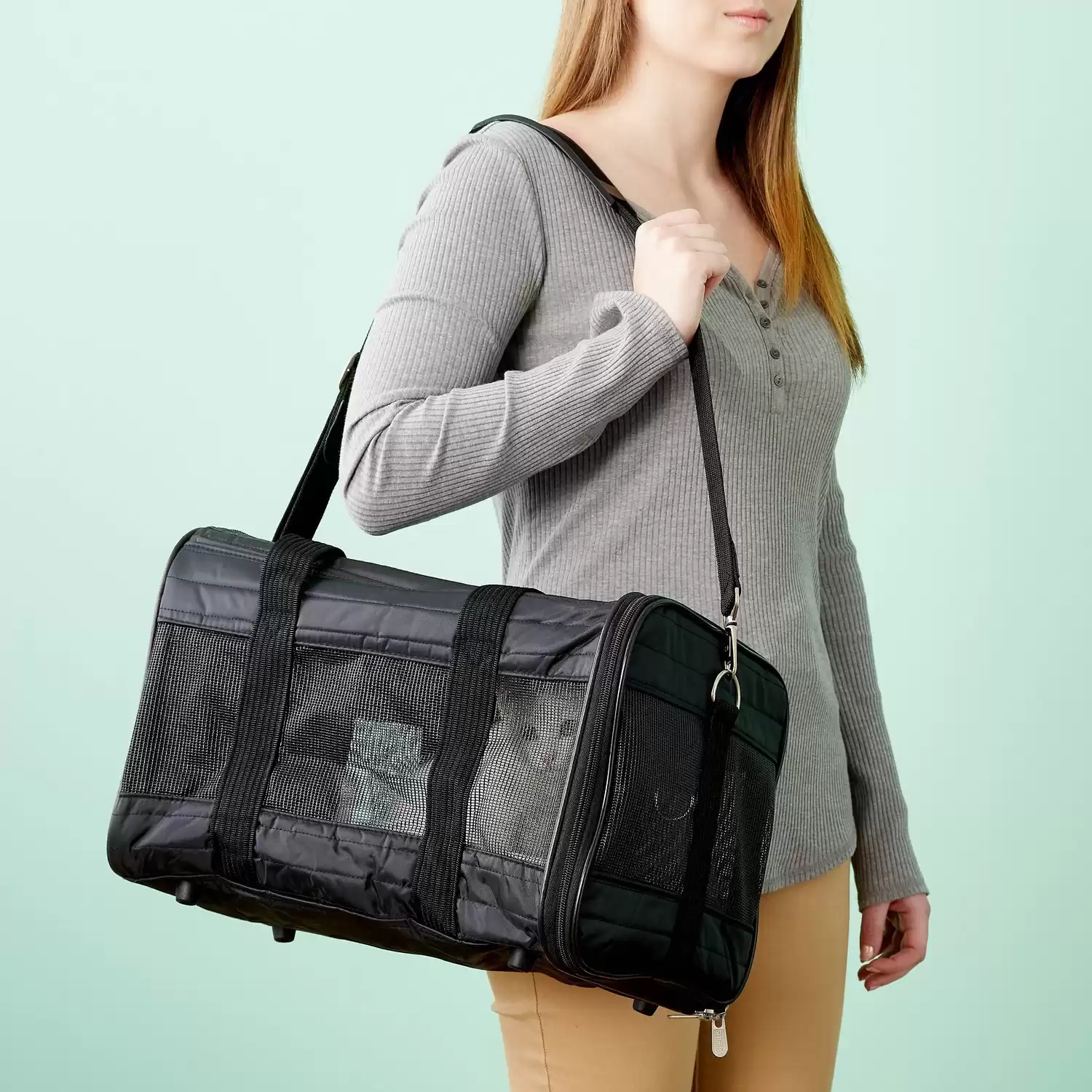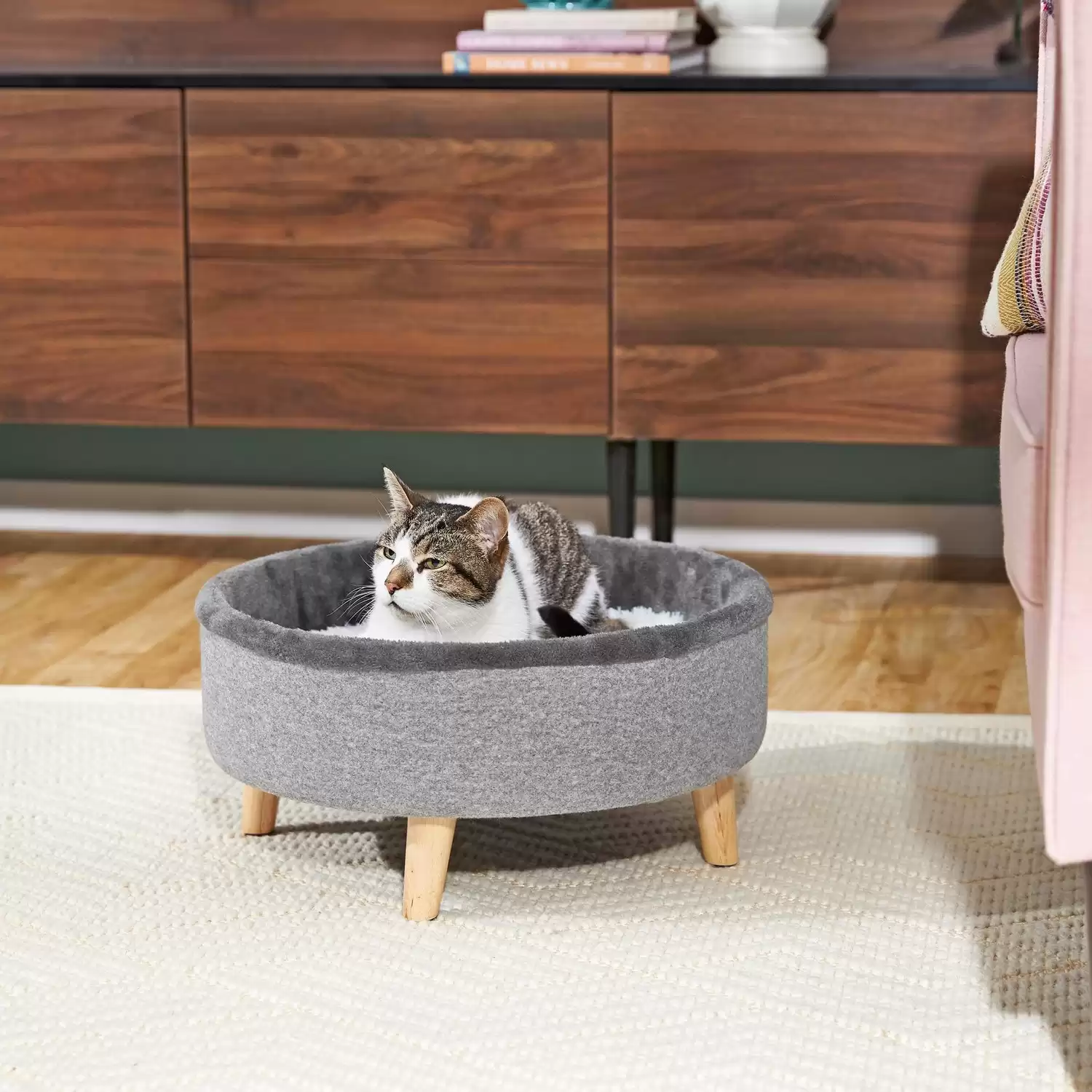While it might not be unusual to see a dog panting to cool itself on a hot day, it might be quite a shock when you notice that your cat is panting. This is because cats do not normally display this behavior, but there are quite a few reasons why they might. Read on to learn more about why your cat could be panting and what you should do about it.
Panting or Heavy Breathing in Cats
Panting in your cat could be relatively harmless or a sign of a serious health condition. If you notice your cat is breathing heavier than normal or is panting, assess the situation based on some of the things we’ll go over below. If you notice that your cat continues to pant heavily, take your cat to the vet so that they can determine the proper cause.
Normal Panting
First, we’ll talk about the normal cases of panting. While relatively rare, cats do have normal cases of panting. Think about what your cat was doing just before you noticed the heavy breathing. Sometimes cats will pant after a heavy play session full of running and jumping. In this case, the cat is simply out of breath from the exertion and needs a moment to catch its breath. This is completely normal and should only last for a short while.
Similar to dogs, cats may also pant if they’re feeling anxious, stressed, or overheated. If you suspect one of these reasons is the cause of your cat’s panting, you should watch to see how long the panting lasts and then decide whether or not to see the vet. Panting is still a rare occurrence in cats.
Symptoms of Heavy Breathing and Panting in Cats
There are a few symptoms you want to be aware of in order to help you determine whether the heavy breathing in your cat is normal or a cause for concern. Be on the lookout for some of these things:
- Hiding
- Coughing
- Lethargy
- Loss of appetite
- Purple/Bluish tint to gums
- Labored breathing (rapid, noisy, or shallow)
- Crouching or standing while stretching the neck and pulling elbows away from body
If you notice any of the above symptoms, you take your cat to the vet immediately so that they can rule out any potentially life-threatening illnesses, as these symptoms combined with heavy breathing/panting are not normal cat behavior. The sooner you are able to get your can seen, the higher the chances for a better outcome.
In cases where breathing is labored or restricted, fast treatment is always critical. It can mean the difference between life and death in some instances—if the case is severe. Delaying a visit to the vet for your cat can put its life at risk or cause the recovery period to be longer and more difficult than necessary. If you are in doubt, it’s always best to seek help. This way of it’s nothing too serious, you can at least put your worries to rest.
Abnormal Panting Causes
You can also check your cat’s temperature to make sure it isn’t running a fever or has a low temperature. A cat’s normal body temperature should range between 100.4 degrees to 102.5 degrees Fahrenheit. Once a cat’s temperature reaches more than 102.5 degrees, it is considered as having a fever. If your cat’s body temperature rises above 106 degrees Fahrenheit it is at serious risk of damage to its vital organs. If you see that your cat is running a fever, take it to the vet immediately so that they can help bring the fever down and determine the cause of it.
Here are a few potential causes of heavy breathing in cats. Remember, only a veterinarian will be able to determine the true cause of your cat’s panting so it is best to get your kitty to the vet as quickly as possible.
Respiratory Infection
Respiratory infections are typically viral in nature and make it difficult for cats to breathe. This can cause your cat to experience heavy or labored breathing. If a secondary bacterial infection develops, it is possible that your cat will need to be treated with antibiotics. While your cat is in recovery, you can use steam or humidifiers to help loosen up the mucus and make it easier for your cat to breathe.
- Variable speed
- 360-degree cool mist
- Whisper quiet
- Filter-free
- Available in 8 colors
Asthma
Asthma is a treatable condition that can cause cats to cough, wheeze, or pant. It can also be responsible for the increased respiratory rate that you notice in your cat. Similarly to humans suffering from asthma, medications like bronchodilators or corticosteroids are often prescribed to help manage these symptoms in cats.
Congestive Heart Failure
In the case of congestive heart failure, fluid can build up around the lungs and make it harder for your cat to breathe. Symptoms of this condition include coughing, deep, rapid breathing, and panting. If your cat is suffering from this condition, you will need to get it to the vet immediately so that treatment can be administered. The vet may drain the fluid and prescribe a medication to help eliminate the rest of the excess fluid. The process will also dilate the blood vessels and force the heart to contract more forcefully, which will help treat the condition.
Heartworm
Heartworm can easily be a cause of breathing problems for your cat. The disease itself can also be fatal if not properly treated, so it’s important for your cat to have regular checkups. A cat can also be put on a monthly preventive medication in order to prevent the disease from happening in the first place. However, if your cat has already been diagnosed with the disease, there are treatment options. Treatment for this disease usually involves supportive care using corticosteroids in order to help reduce inflammation. In cases that are more severe, your cat may need to undergo oxygen therapy.
Other Conditions
There are a few more conditions that can cause heavy breathing or panting in your cat including pain, neurological disorders, enlargement of the abdomen, anemia, or trauma.
What Do I Do If My Cat Is Panting Heavily?
All of the things we’ve mentioned can cause labored breathing in cats. With so many different causes, it’s critical to have a professional examine your cat and let your know exactly what is going on so that you can get your cat the correct treatment that it needs. So the first thing you’ll want to do is take your cat to the vet. While you’re on the way, it’s important to reduce stress for your cat as much as possible and make the trip comfortable for it. It is best to use a cat carrier that can help your cat feel safe and comfortable while on your way to the clinic, that way its breathing isn’t further compromised by being held too tightly.
- Airline approved
- The patented spring wire frame conforms to seat requirements
- Padded, adjustable straps
- Available in three sizes
- Available in Black and Lattice
The key is making sure that your cat remains as comfortable as possible so that it doesn’t begin to breathe even heavier out of fear or stress. Once you get to the vet, the veterinarian will most likely put your cat on oxygen right away to help the cat breathe easier and allow it to calm down. They will then do a thorough physical examination of your cat to check that its heart and lungs are functioning properly.
Sometimes the vet will also have X-rays of your cat taken to have a better look at what’s going on on the inside. If the vet discovers that there has been a buildup of fluid in the chest, the next step will be to focus on treating the condition by removing the excess fluid buildup, which can be done with a needle. Most cats will tolerate the needle well.
Depending on the underlying cause, it may be difficult to prevent the buildup from returning, but the vet will find and administer the best treatment for your cat’s condition. The goal of the treatment is to get your cat well enough to be able to eat and drink on its own. In some cases, they may need to stay over at the animal hospital for a few days while they monitor your cat and it receives intravenous fluids and medications. As we mentioned before, in more severe cases, oxygen therapy may be needed long-term or indefinitely. Once your cat is back home and recovering, make sure it has a comfortable, safe place to rest as it will likely be exhausted from the experience.
- Round elevated bed with attractive, modern styling
- Soft fur lining
- Sleek wood legs
- Stylish design
- Includes a removable, machine-washable pillow
Keep in mind, that the only way to determine the true cause of your cat’s panting or heavy breathing is to have them seen by a professional. The causes may not always be as severe as some of the conditions we’ve mentioned here. They may be as simple as too much playtime or being overly warm. Always pay close attention to your cat’s behaviors so that you know what is normal for it and what is not. A healthy, normal cat will not usually pant. So if you spot this behavior, pay close attention and consider some of the options we’ve laid out here. Only a veterinarian can diagnose or prescribe treatment for your cat based on its specific condition and needs.
The photo featured at the top of this post is © PRESSLAB/Shutterstock.com
Thank you for reading! Have some feedback for us? Contact the AZ Animals editorial team.









